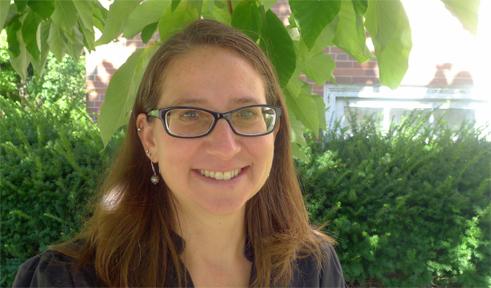The program is recommended for the student interested in an independent and flexible environment, one designed to meet individual interests and needs. Opportunities for in-depth investigation of contemporary approaches to molecular, organismal, and environmental analyses provide a stimulating preparation for graduate study and career development. These cover a broad range, from teaching and research in schools and universities through research and development in a commercial environment to ecological work with federal and state agencies or private organizations.
Program Overview
All of the beginning curricula within the Environmental and Plant Biology Tutorial Program are likely to have a common base, with variations in content and emphasis coming in the more advanced tutorials, which are designed to suit the individual student. A typical schedule is outlined below.
Requirements outside plant biology are, for the most part, identified by course number. Students who wish to take alternate courses to satisfy the requirements may substitute, for example, a different organic chemistry or physics sequence for those listed. Tutorial students are expected to acquire proficiency in fundamental areas of chemistry, mathematics, physics, and biological sciences; conventional courses meet the department's outside requirements in those fields.
Honors Tutorial College students must fulfill the Ohio University English Composition requirements but are otherwise exempt from General Education requirements. Tutorial students may take non-major courses in addition to their major requirements, if they wish to pursue other interests while completing their undergraduate degree program.
Advanced Tutorials
In the second and later years, individually designed tutorials cover more specific aspects of plant biology, environmental biology, or cell and molecular biology. These tutorials, which cover in depth some selected aspects of a chosen area, may take the form of laboratory or field projects as well as the discussion format.
Areas available include the morphology of vascular and non-vascular plants, systematics, including molecular systematics, ecology, physiology, cell biology and biochemistry, molecular biology and genetics, population genetics and evolution. In addition, students may acquire a broad perspective of these areas by attending undergraduate or graduate classes offered by the Environmental and Plant Biology Department.
There is sufficient time in the program for students to widen their experience by taking outside courses, e.g., biochemistry, economics, geography, geology, biological sciences, which the tutor and student may feel useful in achieving a particular goal.
Students have access to the many study abroad opportunities at Ohio University. Three students from this department have each spent a year as exchange students at the University of Wales. Since its introduction in 2000, students have also participated in the Global Studies in Plant Biology program in which faculty have led expeditions to Bolivia, Hawaii, New Zealand, Thailand, and Brazil.
Eligibility
Applicants are selected on the basis of superior academic ability and the potential for self-motivated undergraduate study and research. Applications are due November 15.
Director of Studies

Dr. Rebecca S. Snell
Ohio Center for Ecology and Evolutionary Studies (OCEES)
Environmental and Plant Biology
411 Porter Hall
Ohio University
Athens, OH 45701
740-597-1628
snell@ohio.edu
Education
Ph.D., University of Toronto, 2013
Research
- Forest Ecology
- Global Change
- Landscape Ecology
- Snell Lab
My research aims to improve our understanding of how plants respond to climate change, at the landscape to regional scale. I am interested in improving our knowledge about the processes that determine species composition, community dynamics and landscape patterns. These are processes such as reproduction, establishment, growth, competition and mortality. Taking a process-based approach will improve our ability to predict how species and ecological systems may respond to future climate change, disturbances and other anthropogenic impacts.
Some of my overall research questions include
- How do abiotic and biotic factors interact to limit plant species abundances and distributions?
- Will the response of vegetation to future climate reflect its response to paleo-climate change?
- How fast can plants migrate and what are the limiting factors? How will forests and forested landscapes respond to climate change?
- Can these responses be mitigated through management?
Current and Recent Research Projects
- The interaction between climate, grazing pressure and woody encroachment in alpine pastures
- Understanding rapid plant migration following the retreat of the last glacier
- The direct effect of climate on reproduction in trees, for both masting and non-masting tree species
Faculty Research Focus Areas
- Forest Ecology
- Global Change
- Landscape Ecology
Selected References
R.S. Snell, C. Elkin, S. Kotlarski and H. Bugmann (2018) Importance of climate uncertainty for projections of forest ecosystem services. Regional Environmental Change. doi: 10.1007/s10113-018-1337-3
Thrippleton, T., H. Bugmann, and R.S. Snell (2017) Herbaceous competition and browsing may induce arrested succession in central European forests. Journal of Ecology. doi:10.1111/1365-2745.12889
Thrippleton, T., H. Bugmann, M. Folini and R.S. Snell (2017) Overstorey-understorey interactions intensify after drought-induced forest die-off: long-term effects for forest structure and composition. Ecosystems. doi:10.1007/s10021-017-0181-5
R.S. Snell, A. Peringer and H. Bugmann (2017) Integrating processes across temporal and spatial scales to simulate landscape patterns and dynamics in mountain pasture-woodlands. Landscape Ecology 32:1079-1096. doi: 10.1007/s10980-017-0511-1
Schuler, L., H. Bugmann and R.S. Snell (2016) From monocultures to mixed-species forests: is tree diversity key for providing ecosystem services at the landscape scale? Landscape Ecology. doi: 10.1007/s10980-016-0422-6
Thrippleton, T., H. Bugmann, K. Kramer-Priewasser and R.S. Snell (2016) Herbaceous understorey – an overlooked player in forest landscape dynamics? Ecosystems. 19:1240-1254 doi: 10.1007/s10021-016-9999-5
Gutiérrez, A.G., R.S. Snell, and H. Bugmann (2016) Using a dynamic forest model to predict tree species distributions. Global Ecology and Biogeography 25:347-358. doi: 10.1111/geb.12421
Snell, R.S. and S.A. Cowling (2015) Consideration of dispersal processes and northerly refugia can improve our understanding of past plant migration rates. Journal of Biogeography 42:1677-1688. doi: 10.1111/jbi.12544
Snell, R.S., A. Huth, J.E.M.S. Nabel, G. Bocedi, J.M.J. Travis, D. Gravel, H. Bugmann, A.G. Gutiérrez, T. Hickler, S.I. Higgins, M. Scherstjanoi, B. Reineking, N. Zurbriggen, H. Lischke (2014) Using dynamic vegetation models to simulate plant range shifts. Ecography 37:1184-1197. doi: 10.1111/ecog.00580
Snell, R.S. (2014) Simulating long distance seed dispersal in a dynamic vegetation model. Global Ecology and Biogeography, 23: 89–98. doi: 10.1111/geb.12106
